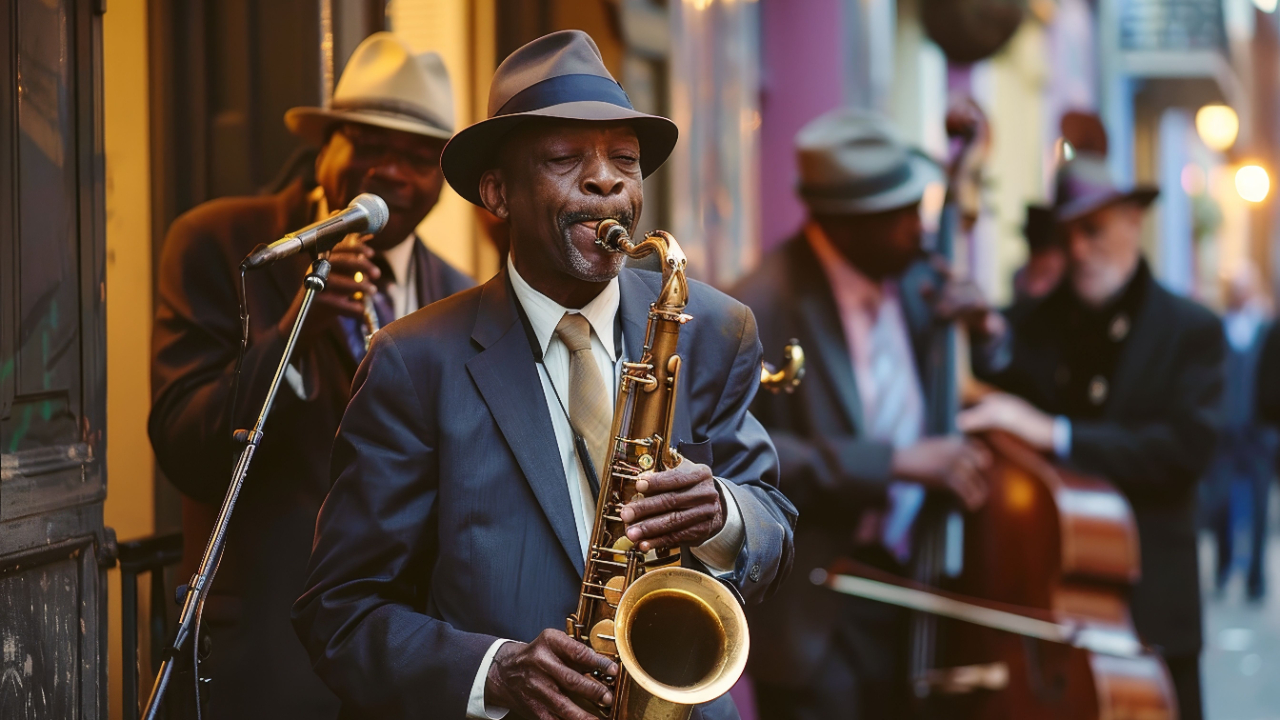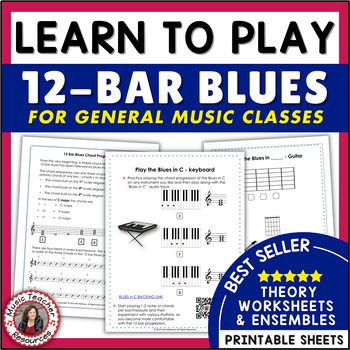Engaging Ways to Teach Jazz in the High School Music Classroom

Bringing Jazz into the High School Classroom – Engaging and Meaningful Lesson Ideas
April is Jazz Appreciation Month, an excellent time to introduce high school students to the rich history, diverse styles, and improvisational nature of jazz. Jazz is a genre deeply rooted in cultural expression, social change, and musical innovation, making it an exciting and relevant subject for students.
Teaching jazz in a high school classroom provides an opportunity for critical listening, musical creativity, and cultural discussions.
Whether your students are performers or simply music enthusiasts, these engaging and structured lesson ideas will help them explore jazz in a meaningful way.
1. Start with a Jazz Playlist
Why It Works:
High school students often connect with music on a deeper level, making a well-curated playlist an effective way to introduce them to jazz styles and legends.
High School-Friendly Jazz Playlist:
- Charlie Parker - "Ornithology" (introduces bebop complexity)
- Miles Davis - "So What" (smooth, cool jazz for deeper analysis)
- Dave Brubeck - "Take Five" (great for exploring odd time signatures)
- John Coltrane - "Giant Steps" (challenging harmonies and improvisation)
- Duke Ellington - "Mood Indigo" (explores color in jazz harmony)
Engaging Activities: Jazz Analysis & Listening Assignment
- Compare and Contrast: Have students listen to two contrasting jazz styles (e.g., swing vs. bebop, cool jazz vs. fusion) and discuss differences in tempo, harmony, and instrumentation.
- Transcription Challenge: Assign students a simple jazz solo excerpt to transcribe or play by ear.
- Historical Context: Discuss how jazz pieces reflect the social and cultural periods in which they were created.
Take It a Step Further: Have students curate their own jazz playlists and present them to the class, explaining their selections.
2. Jazz and Improvisation Workshop
Why It Works:
Improvisation is at the heart of jazz and provides high school students with an opportunity to develop spontaneity, listening skills, and musical risk-taking.
How to Do It:
- Rhythmic Improvisation: Use a 12-bar blues backing track and have students improvise using simple rhythmic variations.There and many backing tracks available on YouTube.
- Melodic Improvisation:
- Teach the blues scale and have students improvise short phrases.
- Challenge them to create melodies over a ii-V-I progression.
- Group Improv Jam: Assign different students to play chordal accompaniments, bass lines, and melodic improvisations.
Take It a Step Further:
- Call-and-Response Challenge: The teacher plays a phrase, and students must respond with their own improvised version.
Helpful Resources
M.T.R. has an excellent resource for teaching students to play the 12-bar blues and the blues scale.
It's perfect for middle school general music classes and high school students.
This resource provides step-by-step guidance to help students understand and perform essential jazz elements with confidence.
Click on the image below for more information!
3. The Influence of Jazz: Cultural and Historical Exploration
Why It Works:
Jazz is not just a musical genre—it’s a reflection of American history, racial identity, and social change. Examining jazz from this perspective connects music with broader historical themes.
How to Do It:
- Discuss the connection between jazz and:
- The Harlem Renaissance
- The Civil Rights Movement
- Prohibition and the Jazz Age
- Assign students a research project on how jazz influenced other music genres (rock, hip-hop, R&B, fusion).
Engaging Activity: Jazz Documentary Analysis
- Show clips from Ken Burns’ Jazz documentary or the film Chasing Trane (about John Coltrane).
- Have students take notes and discuss themes of musical innovation, race, and social activism.
Take It a Step Further:
- Host a debate on jazz’s role in shaping modern music—is jazz still relevant today
4. Scat Singing and Vocal Jazz Improvisation
Why It Works:
Scat singing is a fun way for students to explore vocal improvisation and jazz phrasing.
How to Do It:
- Introduce examples from Ella Fitzgerald, Louis Armstrong, and Sarah Vaughan.
- Teach students scat syllables ("bop-ba-da," "shoo-bee-doo").
- Have students try call-and-response scat improvisation.
- Challenge students to sing an improvised solo over a backing track.
Take It a Step Further:
- Have students write their own lyrics and improvise melodies over a blues form.
5. Jazz Composition and Arrangement Project
Why It Works:
Composing and arranging jazz pieces allows students to apply their theoretical knowledge and creativity in a structured format.
How to Do It:
- Have students compose a short jazz melody over a 12-bar blues or ii-V-I progression.
- Introduce chord voicings and reharmonization techniques.
- Allow students to arrange a standard jazz piece with their own creative twists.
Take It a Step Further:
- Have students perform their compositions and receive peer feedback.
6. Exploring Jazz Fusion and Modern Jazz
Why It Works:
Many students enjoy rock, hip-hop, and electronic music—showing them how jazz has evolved into fusion and contemporary jazz styles can increase engagement.
How to Do It:
- Introduce artists like Herbie Hancock, Snarky Puppy, Esperanza Spalding, and Robert Glasper.
- Compare classic jazz recordings with fusion tracks to discuss genre blending.
- Have students create their own "What If Jazz Met..." project, where they reimagine a pop song as a jazz piece.
Take It a Step Further:
- Assign a listening reflection on how jazz techniques appear in modern music.
Wrap-Up: Reflect & Share
Encourage students to reflect on their jazz learning experience:
- What was the most surprising thing you learned about jazz?
- Which jazz artist or piece stood out to you the most?
- How did it feel to improvise or compose jazz music?
- Can you hear jazz influences in today’s music?
Encourage students to continue their jazz journey by exploring live performances, recordings, or even participating in a jazz ensemble!
Final Thoughts
Bringing jazz into the high school classroom provides students with a deep appreciation for improvisation, history, and musical exploration.
By combining listening, performing, analyzing, and creating, students can connect with jazz in a meaningful and personal way.
Try these ideas and help high school students experience the excitement and innovation of jazz this Jazz Appreciation Month!
What’s your favorite way to introduce jazz to high school students? Share in the comments!
Looking for more time-saving, engaging resources?
Check out MTR’s collection of music teaching materials - SHOP the MTR Store or our store on TpT.
Would you like more music teaching strategies? Check out these related posts to keep your lessons fresh and interactive!
Blog Post: Teaching Rhythm in Music
Blog Post: Brining 1950s Rock 'n' Roll to Life in the Music Classroom
Blog Post: Test Prep Tips for Music Teachers
Blog Post: Activities for Teaching About The Beatles
Blog Post: How to Train Young Singers: 7 Must-Know Vocal Tips
MTR 12-Month Memberships
Save time and inspire your students with a growing collection of music-teaching resources!
Subscribe to one of the MTR 12-Month Memberships for Music Teachers today.
Click HERE for more information!
Sign up to receive the monthly MTR newsletter and gain exclusive access to the
FREE Resource Library for music teachers!




